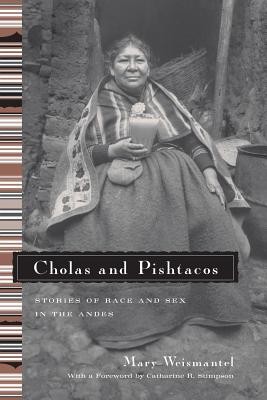
- We will send in 10–14 business days.
- Author: Mary Weismantel
- Publisher: University of Chicago Press
- ISBN-10: 0226891542
- ISBN-13: 9780226891545
- Format: 15.2 x 22.8 x 2.2 cm, minkšti viršeliai
- Language: English
- SAVE -10% with code: EXTRA
Reviews
Description
Winner of the 2003 Senior Book Prize from the American Ethnological Society.
Cholas and Pishtacos are two provocative characters from South American popular culture--a sensual mixed-race woman and a horrifying white killerwho show up in everything from horror stories and dirty jokes to romantic novels and travel posters. In this elegantly written book, these two figures become vehicles for an exploration of race, sex, and violence that pulls the reader into the vivid landscapes and lively cities of the Andes. Weismantel's theory of race and sex begins not with individual identity but with three forms of social and economic interaction: estrangement, exchange, and accumulation. She maps the barriers that separate white and Indian, male and female-barriers that exist not in order to prevent exchange, but rather to exacerbate its inequality. Weismantel weaves together sources ranging from her own fieldwork and the words of potato sellers, hotel maids, and tourists to classic works by photographer Martin Chambi and novelist José MarÃa Arguedas. Cholas and Pishtacos is also an enjoyable and informative introduction to a relatively unknown region of the Americas.EXTRA 10 % discount with code: EXTRA
The promotion ends in 23d.09:42:26
The discount code is valid when purchasing from 10 €. Discounts do not stack.
- Author: Mary Weismantel
- Publisher: University of Chicago Press
- ISBN-10: 0226891542
- ISBN-13: 9780226891545
- Format: 15.2 x 22.8 x 2.2 cm, minkšti viršeliai
- Language: English English
Winner of the 2003 Senior Book Prize from the American Ethnological Society.
Cholas and Pishtacos are two provocative characters from South American popular culture--a sensual mixed-race woman and a horrifying white killerwho show up in everything from horror stories and dirty jokes to romantic novels and travel posters. In this elegantly written book, these two figures become vehicles for an exploration of race, sex, and violence that pulls the reader into the vivid landscapes and lively cities of the Andes. Weismantel's theory of race and sex begins not with individual identity but with three forms of social and economic interaction: estrangement, exchange, and accumulation. She maps the barriers that separate white and Indian, male and female-barriers that exist not in order to prevent exchange, but rather to exacerbate its inequality. Weismantel weaves together sources ranging from her own fieldwork and the words of potato sellers, hotel maids, and tourists to classic works by photographer Martin Chambi and novelist José MarÃa Arguedas. Cholas and Pishtacos is also an enjoyable and informative introduction to a relatively unknown region of the Americas.

Reviews